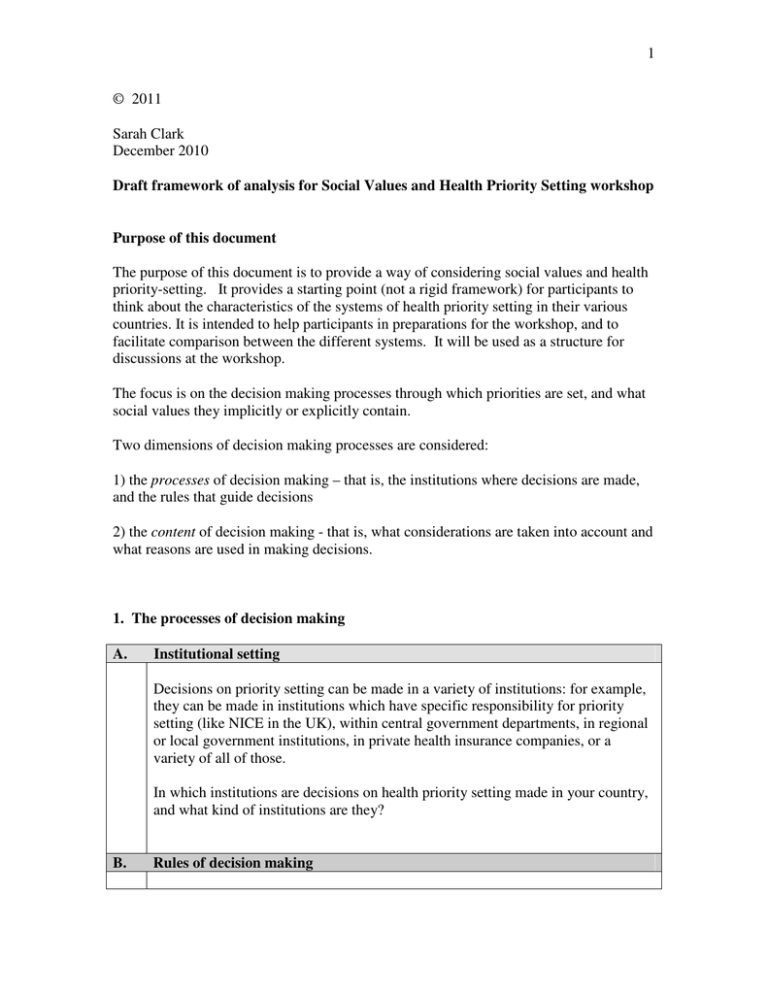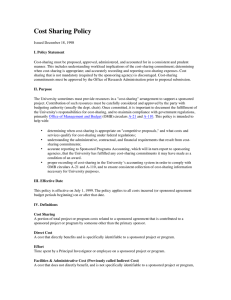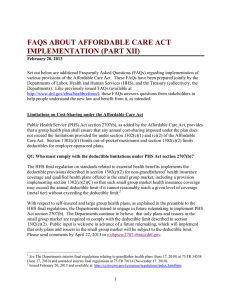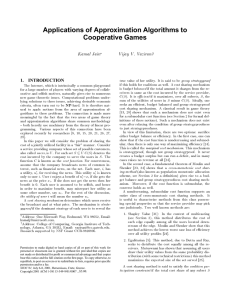1 © 2011 Sarah Clark
advertisement

1 © 2011 Sarah Clark December 2010 Draft framework of analysis for Social Values and Health Priority Setting workshop Purpose of this document The purpose of this document is to provide a way of considering social values and health priority-setting. It provides a starting point (not a rigid framework) for participants to think about the characteristics of the systems of health priority setting in their various countries. It is intended to help participants in preparations for the workshop, and to facilitate comparison between the different systems. It will be used as a structure for discussions at the workshop. The focus is on the decision making processes through which priorities are set, and what social values they implicitly or explicitly contain. Two dimensions of decision making processes are considered: 1) the processes of decision making – that is, the institutions where decisions are made, and the rules that guide decisions 2) the content of decision making - that is, what considerations are taken into account and what reasons are used in making decisions. 1. The processes of decision making A. Institutional setting Decisions on priority setting can be made in a variety of institutions: for example, they can be made in institutions which have specific responsibility for priority setting (like NICE in the UK), within central government departments, in regional or local government institutions, in private health insurance companies, or a variety of all of those. In which institutions are decisions on health priority setting made in your country, and what kind of institutions are they? B. Rules of decision making 2 Priority setting decisions are usually made according to some kind of rules – for example clinical effectiveness, cost or severity of medical need, to name but a few. Sometimes these rules may not be stated officially but rather just informally accepted by decision makers, so patients and the public may or may not know what the rules are. What kinds of rules are there for decision making in your country, and are they openly stated so that patients and members of the public know what they are? C. Accountability for decisions Accountability means being answerable to those who are affected by decisions made about health priorities – typically patients and the public – for how health resources are allocated. It can involve, for example, providing information about how priorities are set or establishing ways by which decisions can be justified to, or challenged by those who are affected. How are decision makers held accountable for the decisions they make on priority setting in your country? What mechanisms, if any, are there by which decision makers are required to justify their decisions? D. Participation in decision making Involving a range of people in making priority setting decisions – for example, patients, the public, health professionals – can be a way to help improve the quality of those decisions by bringing relevant information and experience to the process. Additionally, participation can help to improve patient’s and the public’s understanding of why and how priorities are set in the way that they are. It can also be a means by which decisions can be challenged by, or justified to patients and the public. Who participates in decision making in your country, and how significant is the contribution of the various participants? 2. The content of decision making A. Cost and clinical effectiveness The clinical effectiveness of a health intervention refers simply to the quality of the benefits it provides for patients. Cost effectiveness aims to maximize the amount of health gained, given the limitations of a certain budget. 3 How are cost and clinical effectiveness taken into account in priority setting decisions in your country, and how important are they compared to other considerations? B. Social value judgements There are a number of other considerations that may be taken into account in setting priorities, apart from those of cost and clinical effectiveness. For example, questions of age, personal responsibility and lifestyle choice, or of family situation may be taken into account; special priority may be given to certain diseases, to care at the end of life or to curative over preventive interventions. How, if at all, are any of these kinds of considerations taken into account, either explicitly or implicitly, in priority setting decisions in your country? C. Cost-sharing Given the limits of funding in publicly financed health systems, some element of cost-sharing is often present so that the state pays for some aspects of healthcare, and the individual for others. In privately financed systems, decisions have to be made as to what interventions will be funded by insurance premiums, and what levels of ‘excess’ individuals are left to pay themselves. What are the arrangements for cost-sharing in your country?











